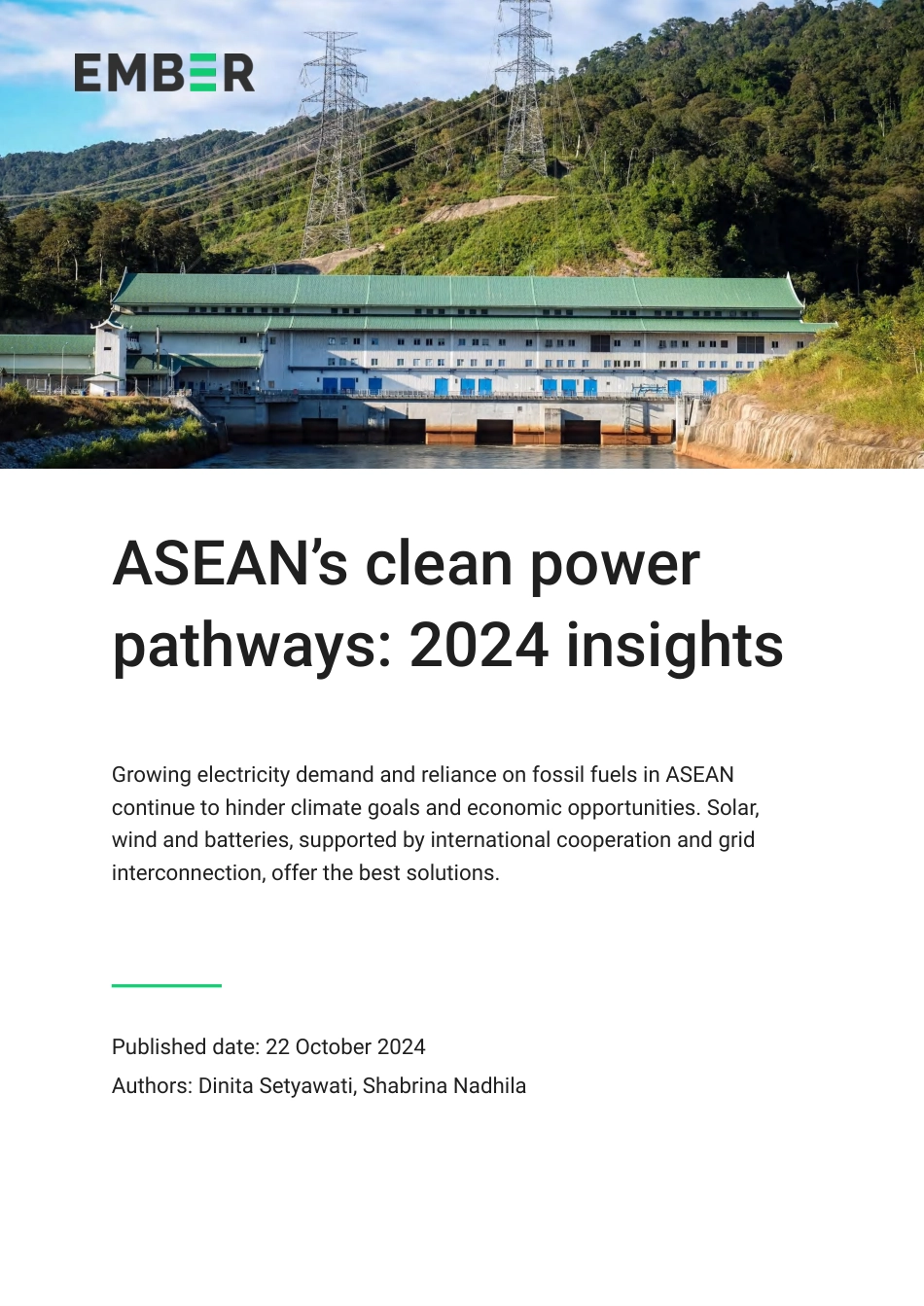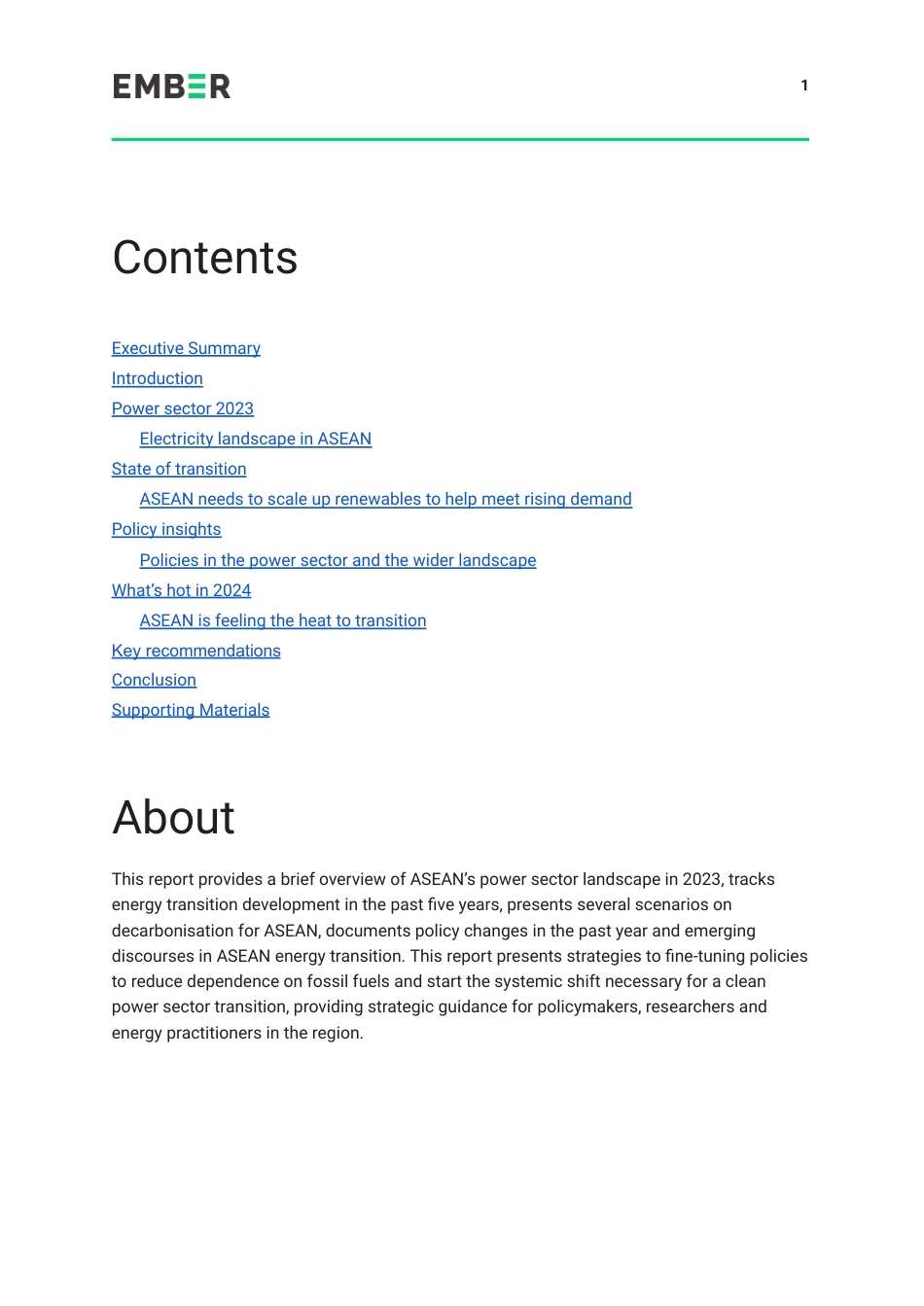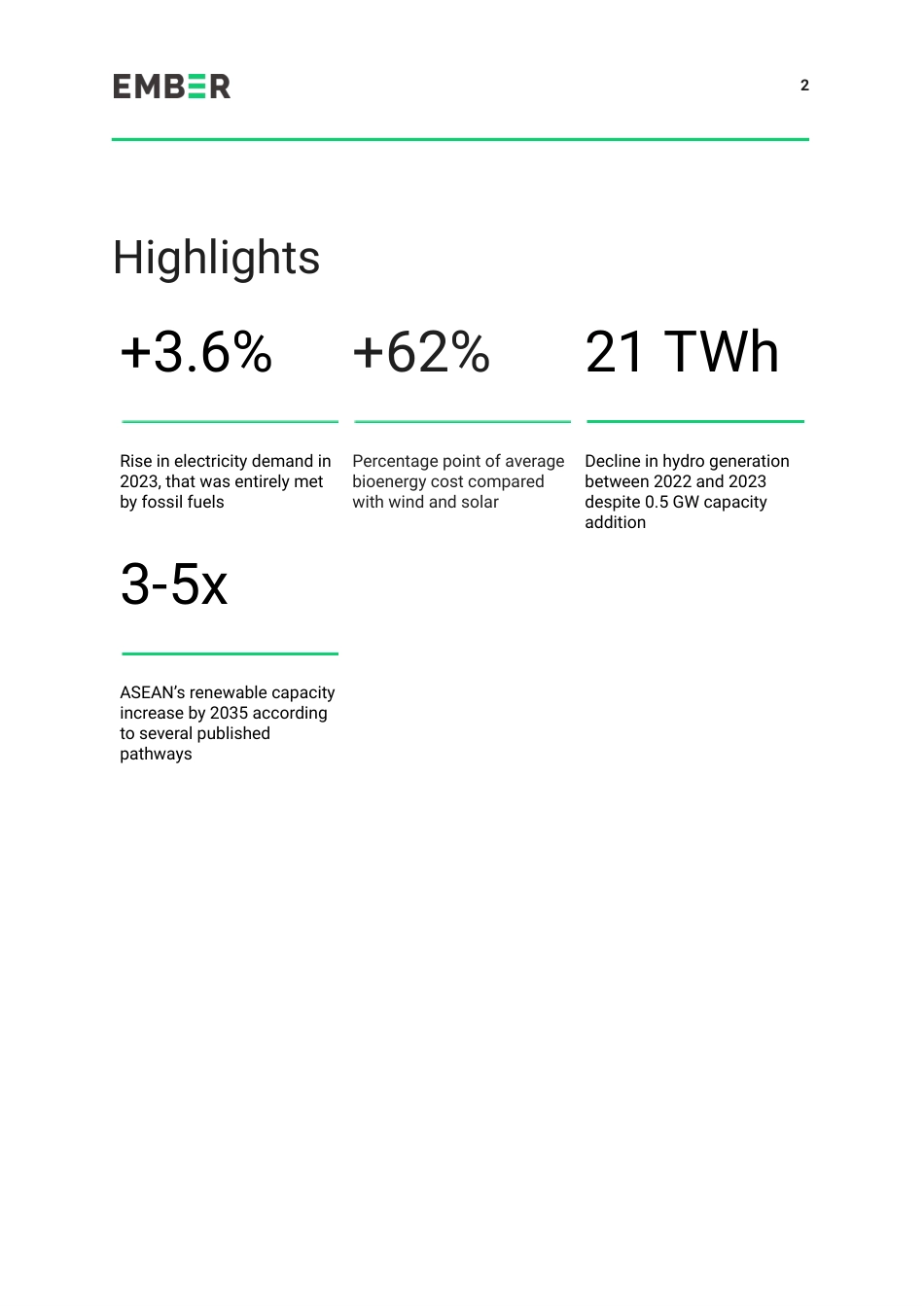ASEAN’scleanpowerpathways:2024insightsGrowingelectricitydemandandrelianceonfossilfuelsinASEANcontinuetohinderclimategoalsandeconomicopportunities.Solar,windandbatteries,supportedbyinternationalcooperationandgridinterconnection,offerthebestsolutions.Publisheddate:22October2024Authors:DinitaSetyawati,ShabrinaNadhila1ContentsExecutiveSummaryIntroductionPowersector2023ElectricitylandscapeinASEANStateoftransitionASEANneedstoscaleuprenewablestohelpmeetrisingdemandPolicyinsightsPoliciesinthepowersectorandthewiderlandscapeWhat’shotin2024ASEANisfeelingtheheattotransitionKeyrecommendationsConclusionSupportingMaterialsAboutThisreportprovidesabriefoverviewofASEAN’spowersectorlandscapein2023,tracksenergytransitiondevelopmentinthepastfiveyears,presentsseveralscenariosondecarbonisationforASEAN,documentspolicychangesinthepastyearandemergingdiscoursesinASEANenergytransition.Thisreportpresentsstrategiestofine-tuningpoliciestoreducedependenceonfossilfuelsandstartthesystemicshiftnecessaryforacleanpowersectortransition,providingstrategicguidanceforpolicymakers,researchersandenergypractitionersintheregion.2Highlights+3.6%+62%21TWhRiseinelectricitydemandin2023,thatwasentirelymetbyfossilfuelsPercentagepointofaveragebioenergycostcomparedwithwindandsolarDeclineinhydrogenerationbetween2022and2023despite0.5GWcapacityaddition3-5xASEAN’srenewablecapacityincreaseby2035accordingtoseveralpublishedpathways3ExecutiveSummaryASEANisthenextgrowthpowerhouse-willrenewableenergyleadthecharge?ASEANhasambitiouseconomicgrowthtargets,whilsttransitioningawayfromcoalandseekingsuitablerenewablessolutions.ASEANeconomicgrowthremainsstrongandresilient,drivenbydomesticandglobaldemand.Ongoingindustrialisation,electrificationanddigitalisationareexpectedtodrivegreaterelectricitydemand,puttingmorepressureonaregiontraditionallydependentonfossilfuels.Demandissettoincreaseevenfurther,upto41%by2030from2023level.4IfASEANcontinuesitsenergytransitionatthecurrentpace,itrisksmissingoutontheopportunitiesprovidedbythedecliningcostsofwindandsolar,nowcheaperthanfossilfuels.Between2018and2022,38GWofrenewableenergycapacitywasadded,withabout44%comingfromsolarcapacitygrowthinVietNam.However,replicatingthissuccessischallengingduetocurtailmentrisksandgridconstraints,leadingtogovernmentstakingamorecautiousapproachandslowingdowntheshiftawayfromfossilfuels.Currentplansindicatethatmuchoftherisingelectricitydemandwillbemetbyfossilfuels,potentiallyincreasingimportdependenceforsomecountries,asseenwithSingaporeandMalaysia’srelianceongas.InothercountrieslikeIndonesia,maintainingcoaldependencyrisksunderminingtheirpotentialcontributiontoclimatetargets.Inlightofthedroughtsandchangingclimaticconditionsin2023,hydroisbecominglessreliablefortheenergytransition.Bioenergy,oftenseenbythegovernmentasthemostpromisingsolutionforenergysecurityandeconomicdevelopment,particularlyforfarmers,faceschallengessuchasseasonality,unpredictability,limitedmaximumquantityandfoodversusfuelallocations,makingitanexpensiveenergysourceinASEAN.Wind,solarandbatteriesofferapromisingwayforward,asseeninothercountries.Moreover,alevelizedcostofelectricity(LCOE)andauctionpricesconfirmthatsolarisamongstthecheapestenergysourcesforelectricitygeneration.Acrosstheregion,solarandwindhaveinterestingcomplementarities,showingthatASEANcaneaseitscollectiveenergytransitionjourneythroughcooperationa...



 VIP
VIP VIP
VIP VIP
VIP VIP
VIP VIP
VIP VIP
VIP VIP
VIP VIP
VIP VIP
VIP VIP
VIP